Rotterdam-based Simone Post is a Dutch textile and product designer with an eye for graphic patterns and rich color palettes. Since graduating with honors in 2015 from the Design Academy Eindhoven, Post’s process-driven designs have led to collaborations with brands like adidas, Kvadrat and Vlisco. For the past year, she’s been collaborating with ceramic art center, Cor Unum, on an extensive research project with experimental materials. After much trial and error, the first product, the Lakenvaas, is available in seven solid colors and a splatter version. Each vase is made by hand to resemble a tablecloth thrown over a table with a wavy shape mimicking the rippling of hanging cloth. In this month’s Deconstruction, Simone Post carries us through the laborious process that results in the sculptural Lakenvaas.
The aim of this design was to give the ceramic, a hard and static material, the tactility and movement that defines textiles. The starting point was a perfectly smooth tablecloth falling off a round table, pleating in unexpected and sensual ways.
With textiles being my specialty and main working material I tried to discern a potential relationship between textiles and ceramics. It started with doing tests trying to shape the ceramics using textiles as a matter to mold.
We noticed using textiles itself to shape the material didn’t work because it became actually too stiff and made the end result not have the textiles feeling at all. So we started pleating the clay directly by hand.
We made a lot of hand-pleated versions to find the perfect shape and size of the pleats.
Finding the sensuality textiles can have: This vase was part of a bigger project researching different tactile textile qualities and translating them in ceramic.
When we found the perfect shape and proportion, production could start. But still every vase becomes unique since the pleats will always look different. Therefore shapes arise which would not have been possible in mass production and impossible to get out of a mold. By combining serial production methods and handwork, we use the best of both worlds. The maker of the vase gives his or her own twist to the vase, which makes every vase unique and gives the ceramic the dexterity of a waving cloth.
We had to come up with a very simple logo which always looks perfectly clear in ceramic. The tree of life is the symbol of the Social workshop Cor Unum and the envelope is Studio Simone Post’s mark.
Then, the edges of each ceramic vase has to be smoothened.
After the edges are softened. The clay has to dry to be ready for its first firing before putting on the glazes.
The starting point was a perfectly smooth white table cloth. So we have a white version but also a stained version. The stained version of this vase is the same table cloth but after a successful, celebratory and therefore slightly messy dinner with loved ones. Here you can see how the stains are applied by hand on the vase by me personally.
Close-up of the stained vases.
Set of vases ready for firing. After the firing the colors will truly pop!

The vase ready after firing!
Next to the white and stained version the vase comes in many different colors. Picking exactly the right colors is very important. Light and shadow plays an important role because of the pleats. Here you see some glazing tests which we also did on three-dimensional shapes to see how the color will look in all kinds of light and shadows.
Taking photos of the final project with the great photographer, Marije Kuiper.
Vase details of the final colors.

Solid colored versions of the vase.
Fini merci!
To purchase the Lakenvaas, head to simonepost.nl or cor-unum.com.
from WordPress https://connorrenwickblog.wordpress.com/2021/07/13/simone-post-experiments-with-ceramics-to-create-the-lakenvaas-for-cor-unum/

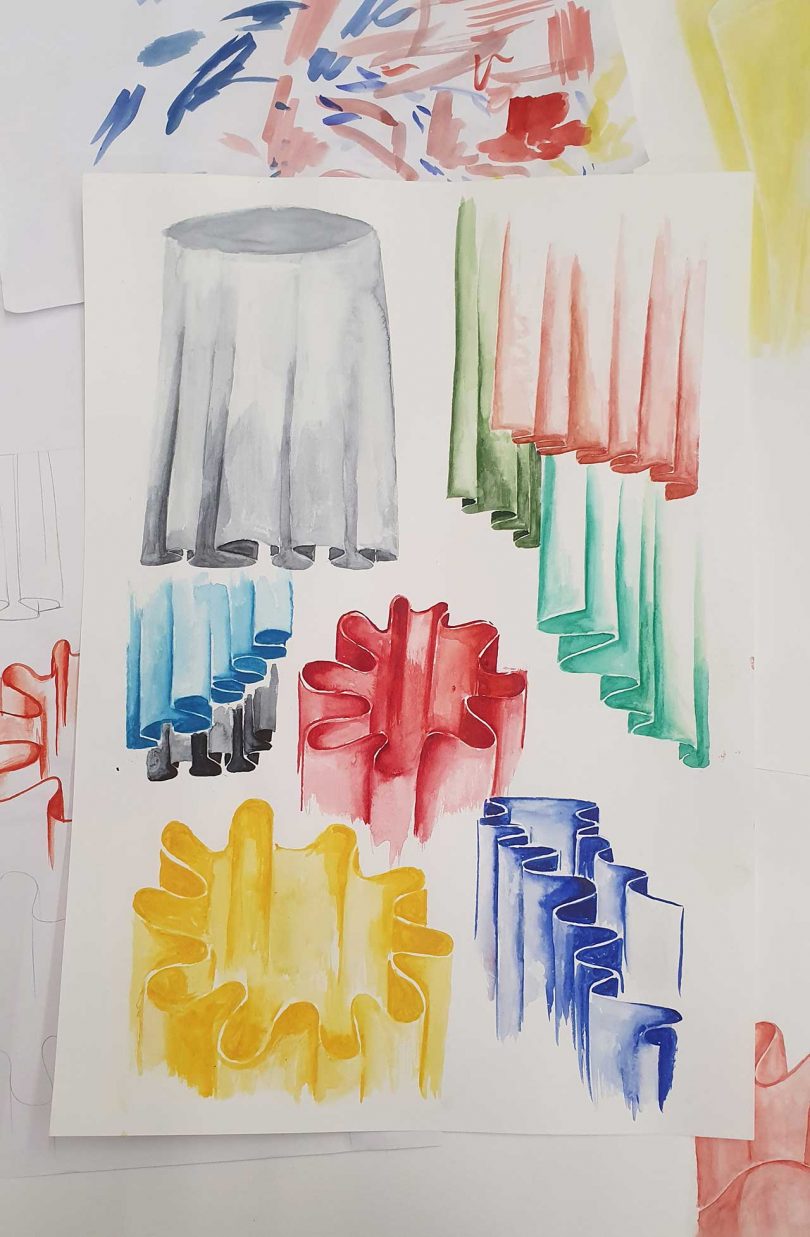


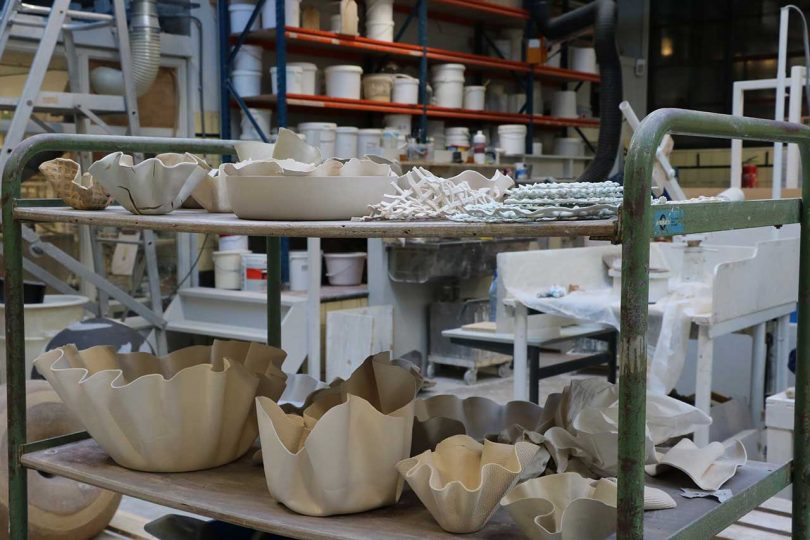




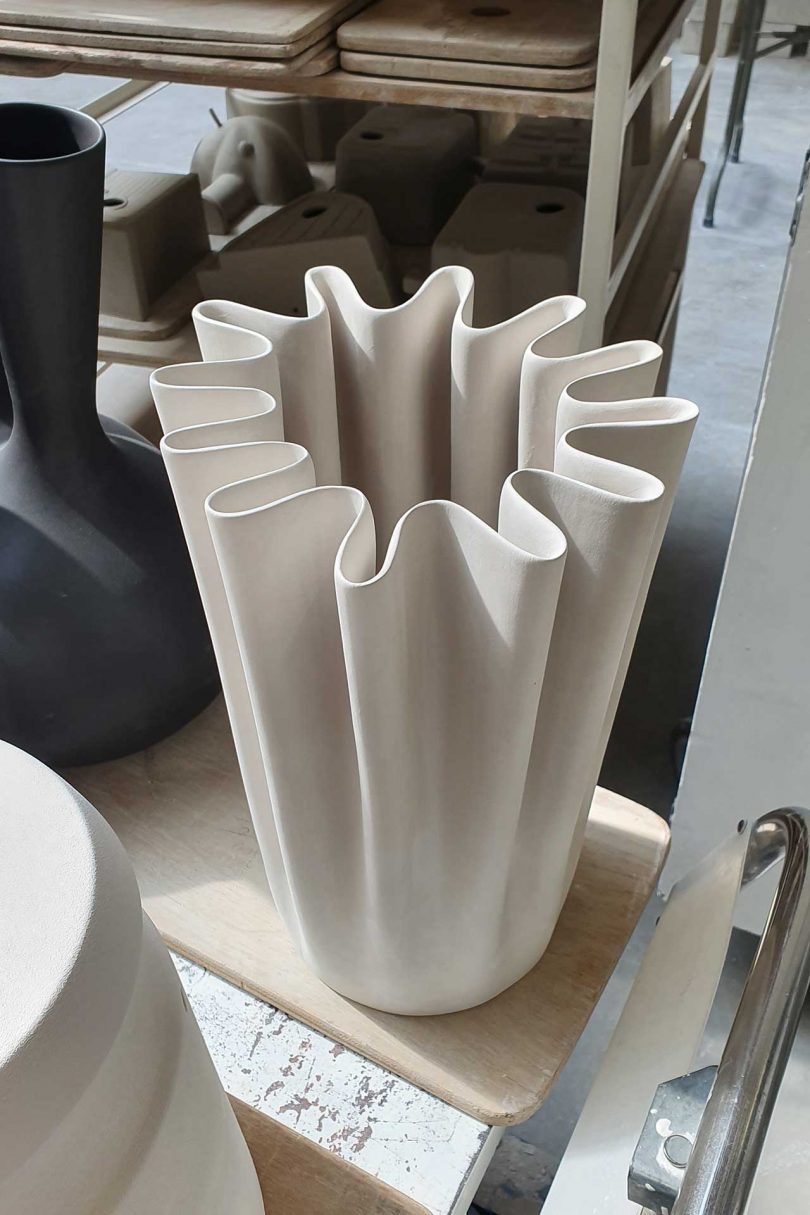



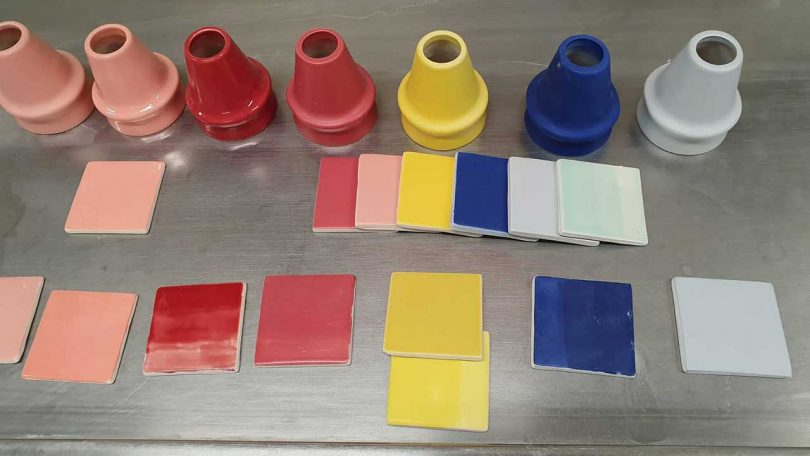



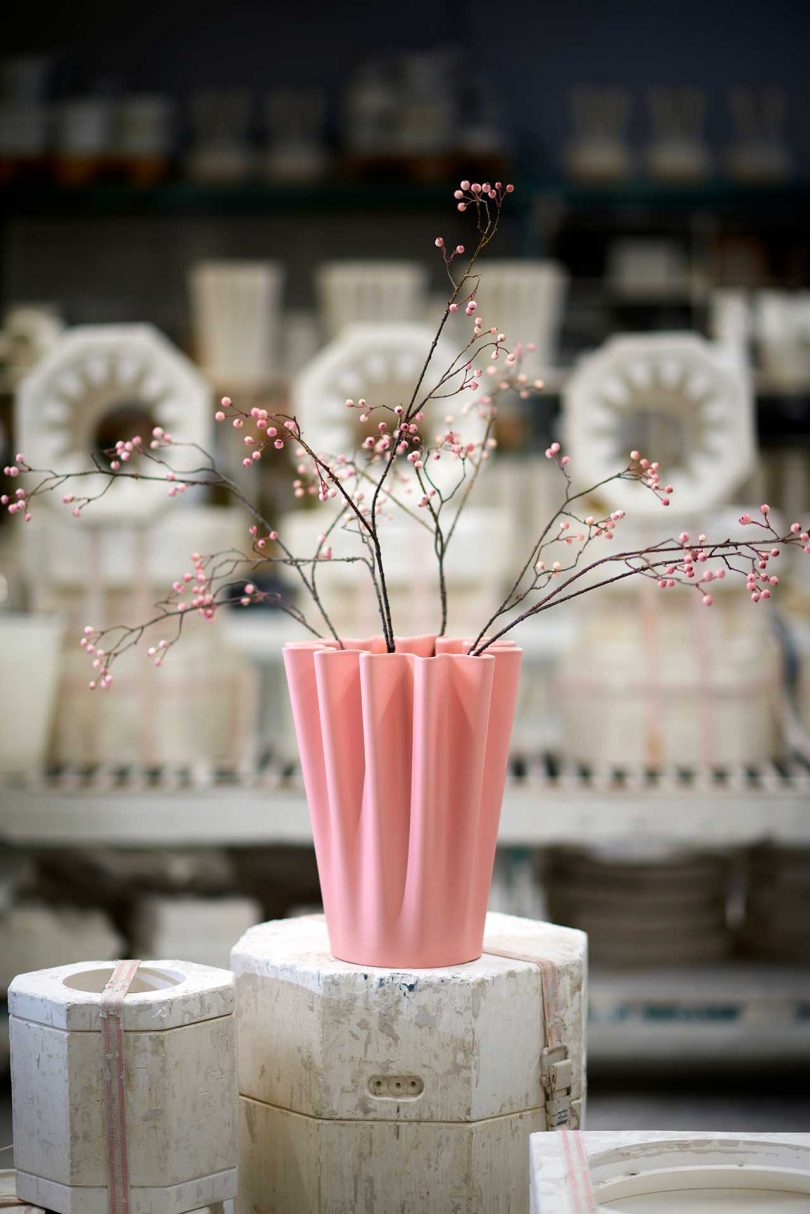

No comments:
Post a Comment